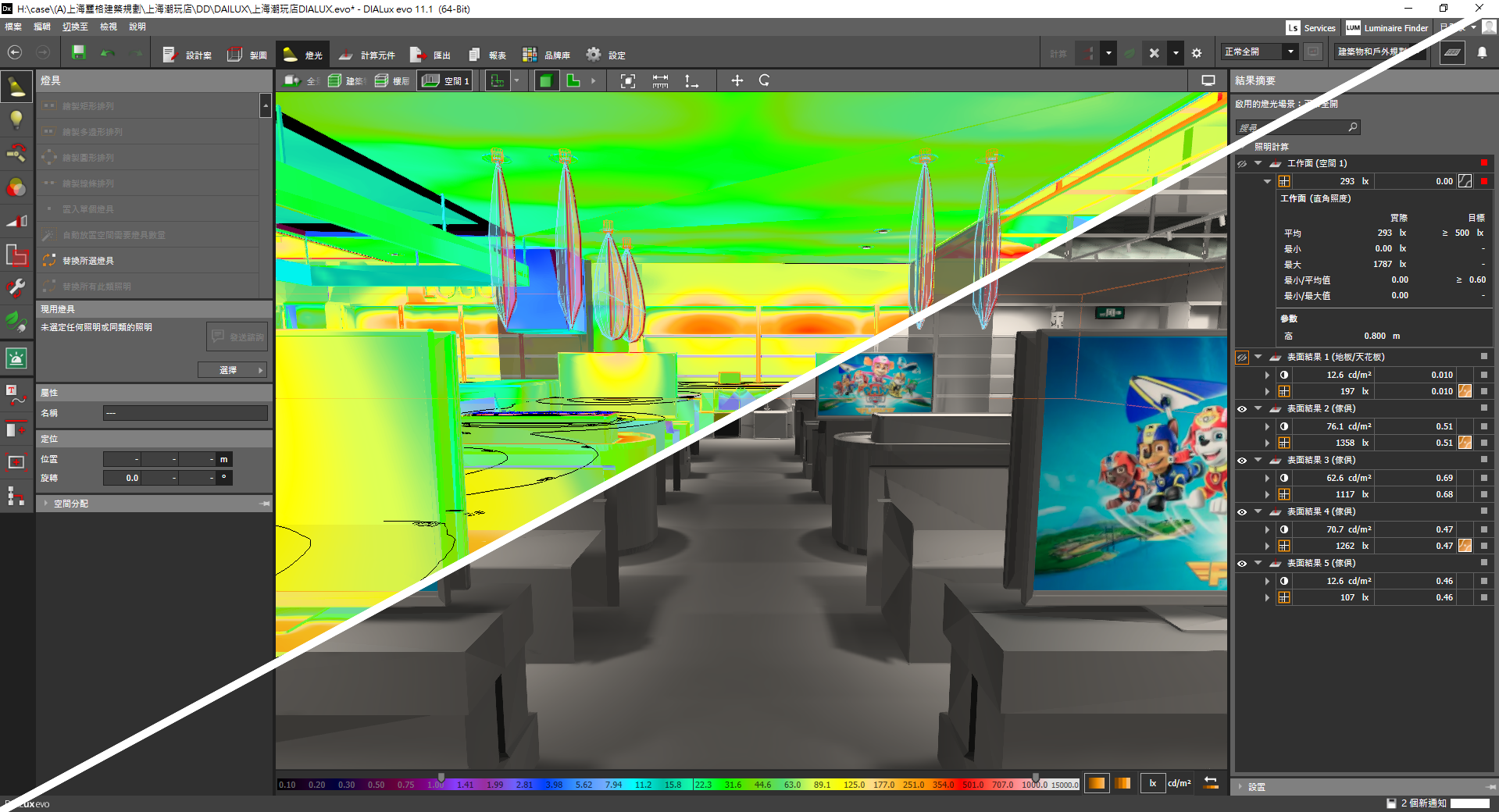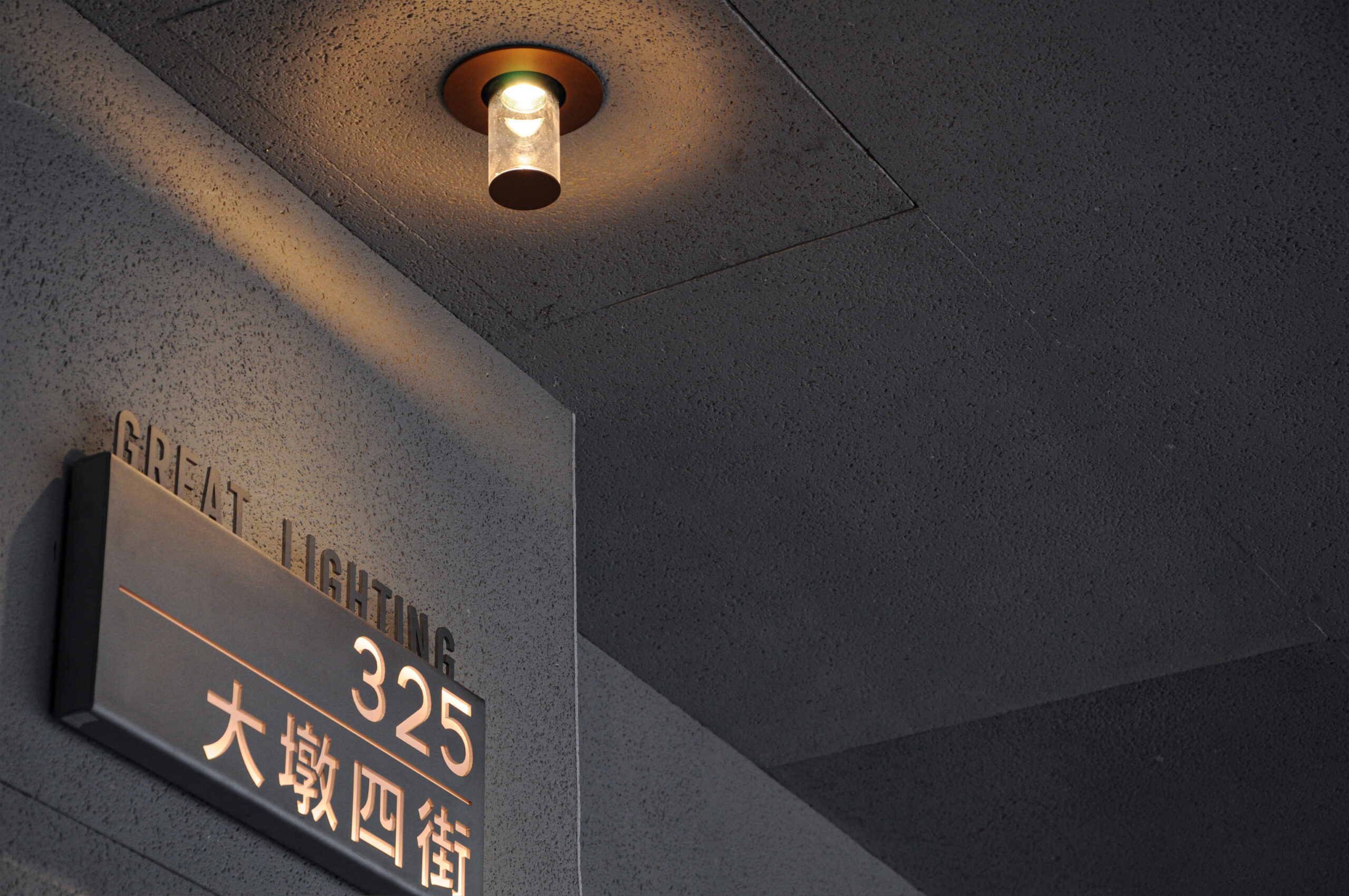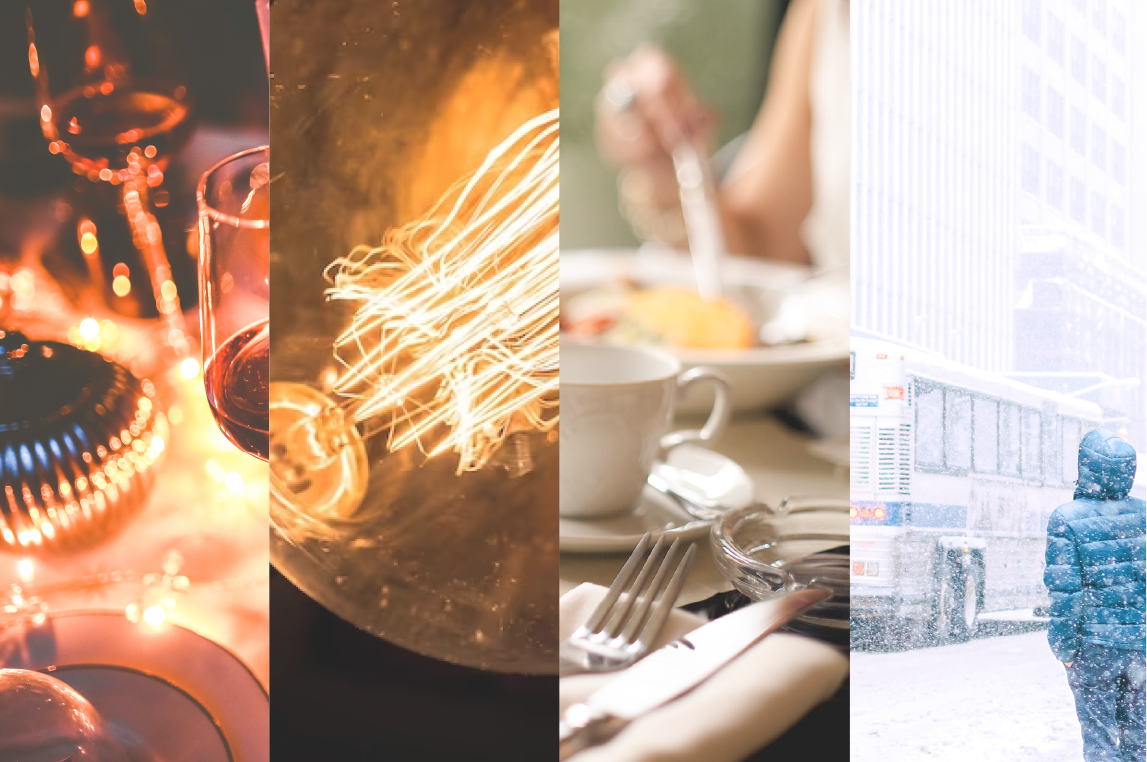
What’s Color temperature?
什麼是色溫?
在繁忙的都市生活中,我們往往忽視了光線的重要性。
然而,光線的顏色對我們的情緒和健康有著深遠的影響。
您是否曾經在一個房間裡感到不舒服或疲憊?
可能是因為光線的顏色不適合當前的活動或氛圍。
要了解光線的顏色,我們需要瞭解色溫這個概念。
色溫是用Kelvin做計量單位來表示光線的顏色。
您可能曾經在燈具外盒包裝或者聽到設計師說燈光的色溫,
例如3000K、4000K、5000K。
這些數字其實是在描述燈光的顏色,而色溫就是光線的顏色。
In the busy urban life, we often overlook the importance of light.
Yet, the color of light profoundly impacts our mood and health.
Have you ever felt uncomfortable or fatigued in a room?
This discomfort could stem from the light’s color not being suitable for the current activity or atmosphere.
Understanding the color of light requires grasping the concept of color temperature.
Color temperature is measured in Kelvin and is used to represent the color of light.
You may have seen it mentioned on the packaging of light fixtures, or heard designers discuss lighting color temperatures, such as 3000K, 4000K, or 5000K.
These numbers actually describe the color of the light, and the color temperature refers to the color of the light.

那麼,色溫和Kelvin之間的關係是什麼呢?
在19世紀,一位名為威廉·湯姆森(William Thompson) 的英國科學家設計了Kelvin Scale,也被稱為克耳文溫標。
在他的研究中,他加熱了一塊碳,觀察到它開始發出紅光,然後是黃光,最後變成明亮的藍白光。這些顏色變化的路徑是克耳文溫標的精髓,
因為每種顏色出現的溫度是特定的。
例如,在2700K的溫度下,白熾燈或鹵素燈泡的燈絲會發出黃光。
更高的色溫代表更冷更藍的光,而較低的色溫則表示較暖的光。
但色溫不僅僅是金屬或碳燃燒時觀察到的現象。事實上,我們每天都身處於光線顏色的變化之中。
想想一天中太陽的變化,從黎明溫柔的橘色光暈,到正午明亮的白光,然後到黃昏溫暖的色調。這些光線顏色的變化代表著色溫的變化。
因此,色溫是我們日常生活中不可避免的一部分,影響著我們的情緒和視覺感知。
So, what’s the relationship between color temperature and the Kelvin Scale?
In the 19th century, a British scientist named William Thompson designed the Kelvin Scale, also known as the Kelvin temperature scale.
During his research, he heated a piece of carbon and observed it emitting red light, then yellow light, and finally transforming into bright blue-white light.
The progression of these color changes embodies the essence of the Kelvin Scale, with each color corresponding to specific temperatures.
For example, at a temperature of 2700K, the filament of incandescent or halogen bulbs emits yellow light.
Higher color temperatures represent cooler, bluer light, while lower color temperatures indicate warmer light.
But color temperature is not just a phenomenon observed when metals or carbon are burned.
In fact, we humans are immersed in the changing colors of light every day.
Consider the variations of sunlight throughout the day, starting from the gentle orange hues of dawn, transitioning to the bright white light of noon, and finally to the warm tones of dusk.
These shifts in light color correspond to changes in color temperature.
Therefore, color temperature is an inevitable part of our daily lives, affecting our mood and visual perception.

「色溫」的概念源自於一個神秘的「黑體」,它只存在於理論中,能吸收任何頻率的電磁輻射,普朗克定律認為,隨著「黑體」溫度的增加,它發射出來的光會往色譜的藍色端移動,如同藍色火焰的頂端為火焰最熱的部分。
色溫的單位是克耳文,這種溫度計量單位以絕對零度(-273°C)為起點,這個值是物理學上宇宙的溫度下限。
太陽的表面溫度是5778K(5505°C),所以它發的光是相對較藍的。
鎢絲燈的燈絲能介於2700~3000K(2927°C~2727°C)之間,所以它發的光相對偏橘。 (如果要從攝氏轉到克耳文,給數字加上273就可以了。)
那如果把鎢絲燈接到調光器上,把它的強度調低50%,那麼色溫可能會是低於2700K,光的顏色就更加偏橘了。
The concept of color temperature originates from a theoretical entity known as a ‘black body,’ which can absorb electromagnetic radiation of any frequency and exists only in theory.
According to Planck’s law, as the temperature of a black body increases, the light it emits shifts towards the blue end of the spectrum. Similar to how the hottest part of a blue flame is at the top.
The unit of color temperature is Kelvin, a temperature measurement scale with absolute zero (-273°C) as its starting point, representing the lowest possible temperature in the universe according to physics. The surface temperature of the sun is 5778K (5505°C), so the light it emits tends to be relatively blue. The filament of a tungsten lamp can range between 2700-3000K (2927°C-2727°C), resulting in light that leans towards the orange end of the spectrum. (To convert from Celsius to Kelvin, simply add 273 to the temperature in Celsius.)
If a tungsten lamp is connected to a dimmer and its intensity is reduced by 50%, the color temperature may drop below 2700K, causing the light to appear even more orange.

那既然太陽的溫度是5778K,那為什麼日出與日落會有不同的色溫?
在日出和日落時,太陽光經過大氣層時會經歷更長的路徑,並且在光路中會經歷更多次的散射。
這導致波長較短的藍色和綠色光被散射出去,而波長較長的紅色和橙色光則能夠相對較好地穿透大氣層,抵達地面。
因此,日出和日落時的陽光呈現出橘紅色的情況。相比之下,正中午太陽直射時,光線相對較少地經歷了大氣層的散射,所以顯得較為偏白。
The reason why sunrise and sunset exhibit different color temperatures, despite the surface temperature of the sun being 5778K, lies in atmospheric conditions.
During sunset, sunlight is inclined as it passes through a longer distance of the atmosphere, encountering more obstacles, such as air particles.
The increased distance and multiple encounters with obstacles cause shorter wavelengths of light, such as blue and green, to scatter in the higher atmosphere, essentially preventing them from reaching the ground.
As a result, only longer wavelengths, particularly red and orange light, remain dominant, giving the sunlight a warm, orange-red hue during sunset.
In contrast, during noon when the sun is directly overhead, there is less atmospheric interference and fewer obstacles along the direct path of sunlight, resulting in a clearer and brighter appearance.
Therefore, the light appears whiter and brighter as it doesn’t undergo as much scattering or color alteration by the atmosphere.

Time and color temperature are closely related.
時間與色溫息息相關
在一天中,自然光的色溫隨著太陽在天空中的移動而改變。
早上和晚上,當太陽在地平線上較低時,光線顯得更溫暖,色溫也更低。 這通常被稱為黃金時刻,其特點是柔和的金色色調。
隨著時間的推移,太陽在天空中升得更高,光線變得更冷,色溫更高,產生更藍、更亮的外觀。
色溫的這種自然變化會影響我們對時間的感知,也會影響我們的情緒和生產力。 例如,清晨較溫暖的光線可以幫助我們逐漸醒來並感到更放鬆,
而白天較冷的光線可以增強注意力和警覺性。
了解時間和色溫之間的關係可以幫助我們創造一個有利於我們全天福祉和活動的照明環境。
Throughout the day, the color temperature of natural light changes as the sun moves across the sky.
In the morning and evening, when the sun is low on the horizon, the light appears warmer with a lower color temperature.
This is often referred to as the golden hour, characterized by soft, golden hues.
As the day progresses and the sun rises higher in the sky,
the light becomes cooler with a higher color temperature, resulting in a bluer, brighter appearance.
This natural variation in color temperature influences our perception of time and can also affect our mood and productivity.
For example, warmer light in the morning can help us wake up gradually and feel more relaxed, while cooler light during the day can enhance focus and alertness. Understanding the relationship between time and color temperature can help us create lighting environments that are conducive to our well-being and activities throughout the day.
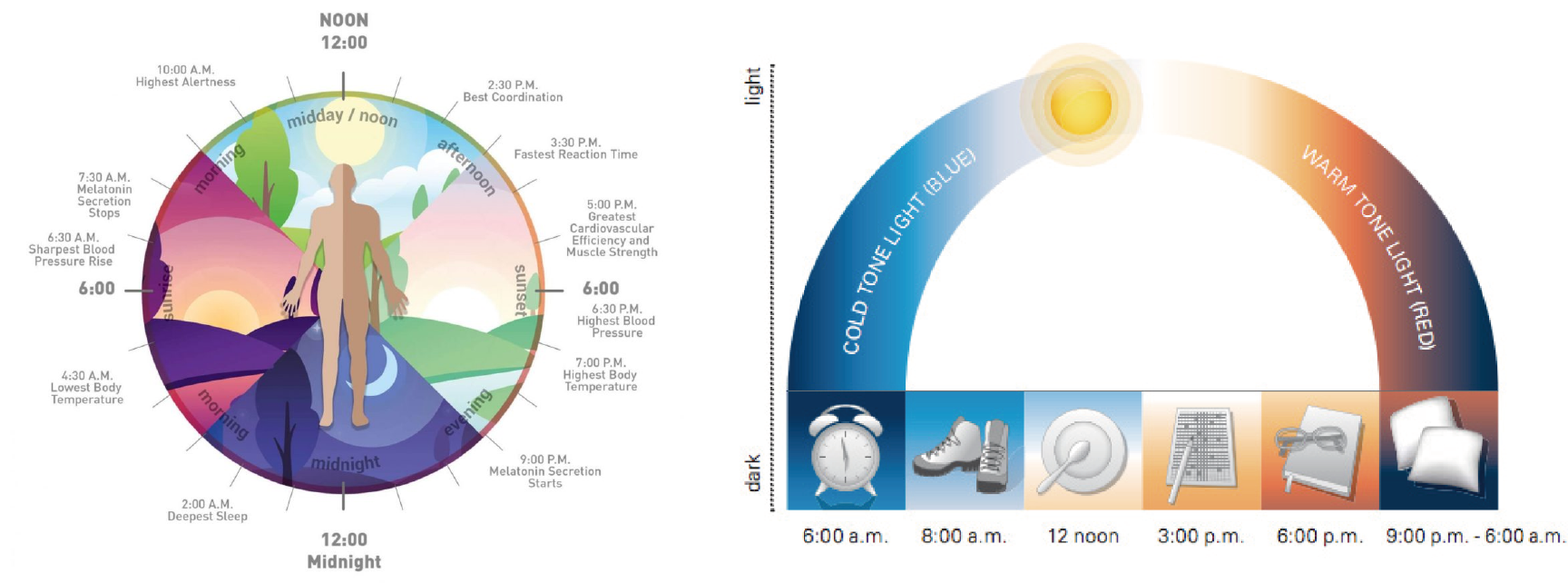
The Origins of LED Color Temperature Today
現今的LED色溫由來
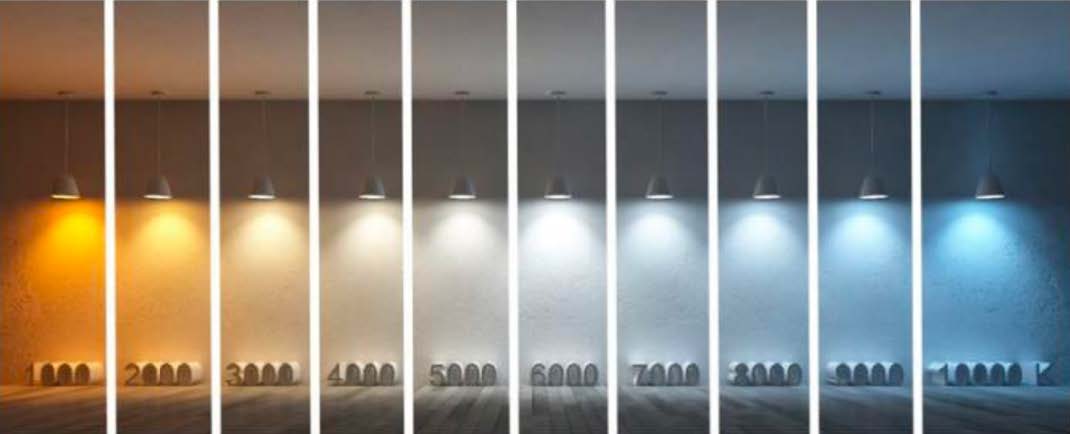
燈具為什麼可以產生出各種色溫?
螢光粉是一個非常關鍵的材料,它可以影響LED的亮度、色坐標、色溫和顯色性等因素。螢光粉的主要功能是轉換或輔助LED的發光特性,例如將藍色LED的光轉換為白色,或增加柔和的暖色調。
螢光粉在LED光源中的作用類似於白熾燈泡中的燈絲,用來調整和改善光的質量。因此,開發高性能的螢光粉對於製造高亮度、高效率和高品質的白光LED至關重要。
LED使用的半導體材料和製造工藝決定了它的發光顏色,所以即使沒有螢光粉,也可以製造出紅、黃、綠、藍、紫等不同顏色的LED,但是由於這些不同顏色LED的發光效率相差很大。
採用螢光粉以後,可以利用某些波段LED發光效率高的優點來製備其他波段的LED,以提高該波段的發光效率。
當然,螢光粉在LED上最廣泛的應用還是在白光領域,但由於其特殊的優點,在彩色LED中也能得到一定的應用。
Why can light fixtures produce various color temperatures?
In LED fixtures, fluorescent powder plays a crucial role. It can affect factors such as the brightness, color coordinates, color temperature, and color rendering index of LEDs.
The main function of fluorescent powder is to convert or assist in adjusting the emission characteristics of LEDs. For instance, it can transform the blue light emitted by LEDs into white light or add a soft warm tone.
The role of fluorescent powder in LED light sources is similar to that of filaments in incandescent bulbs, serving to adjust and improve the quality of light. Therefore, the development of high-performance fluorescent powder is essential for manufacturing high-brightness, high-efficiency, and high-quality white LEDs.
Furthermore, the semiconductor materials and manufacturing processes used in LEDs also influence their emission colors.
Even without fluorescent powder, LEDs can emit light in various colors such as red, yellow, green, blue, and purple.
Overall, the continuous development of fluorescent powder and LED semiconductor materials and manufacturing processes enables light fixtures to produce lights with various color temperatures, meeting the lighting requirements of different occasions and needs.
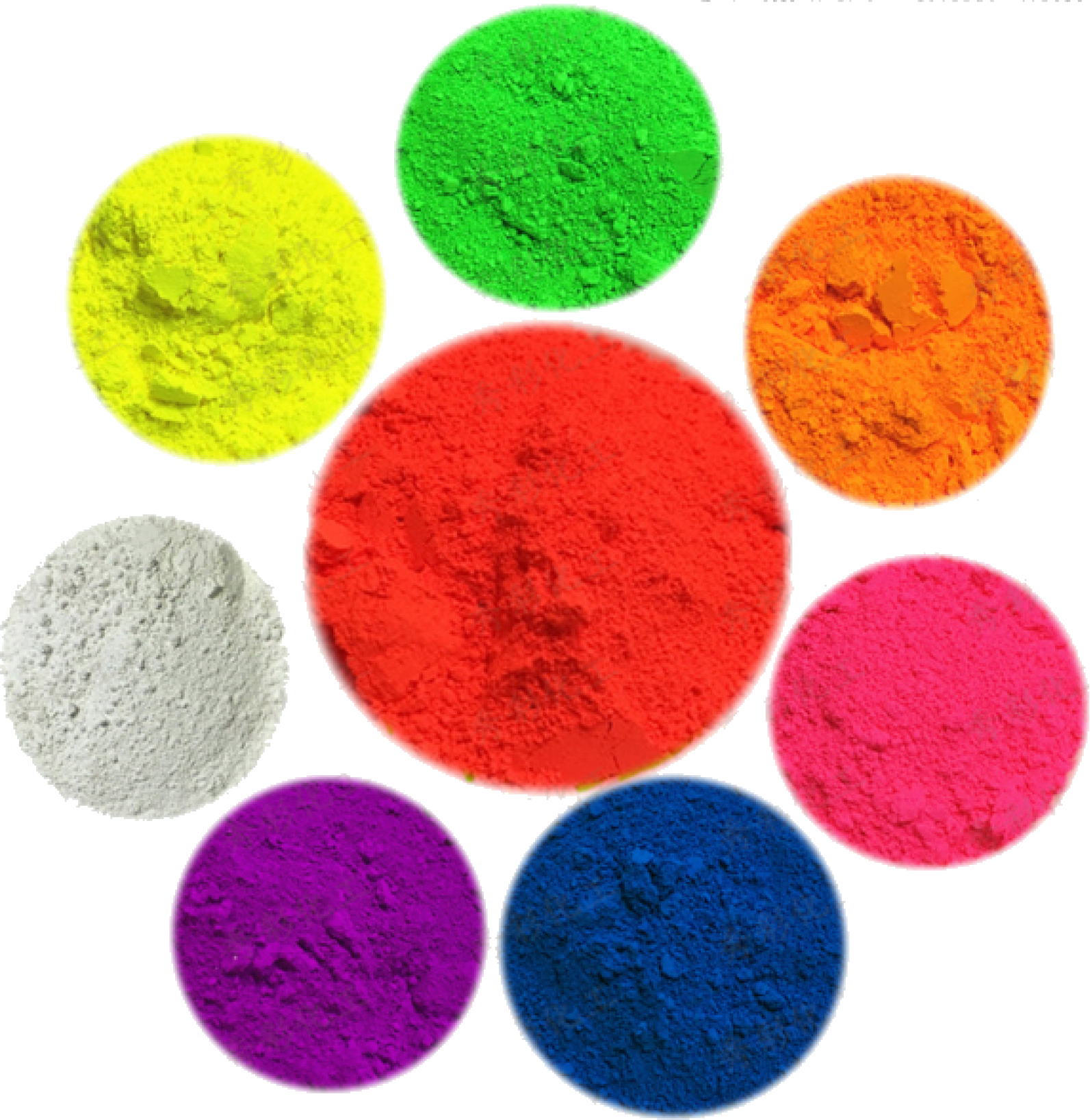
螢光粉(fluorescent powder)
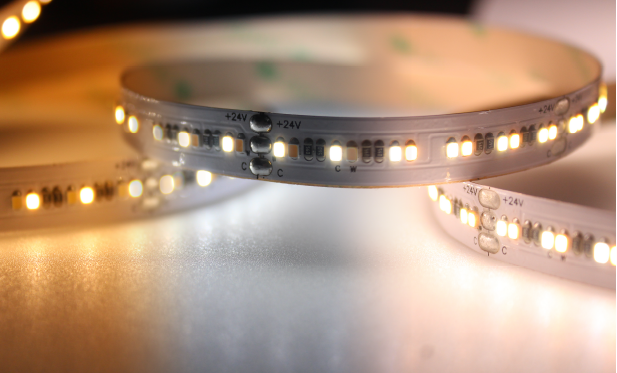
雙色溫燈帶(CCT Tunable LED strip)
The General Application of Color Temperature in Scenes
色溫一般對於場景的應用

2300K-2700K
常用於氛圍感較佳,燈光較昏暗的環境
如:高級餐廳、酒吧、高級飯店…..等等
Commonly used in environments with a better ambiance and dimmer lighting, Such as: upscale restaurants, bars, luxury hotels… etc.
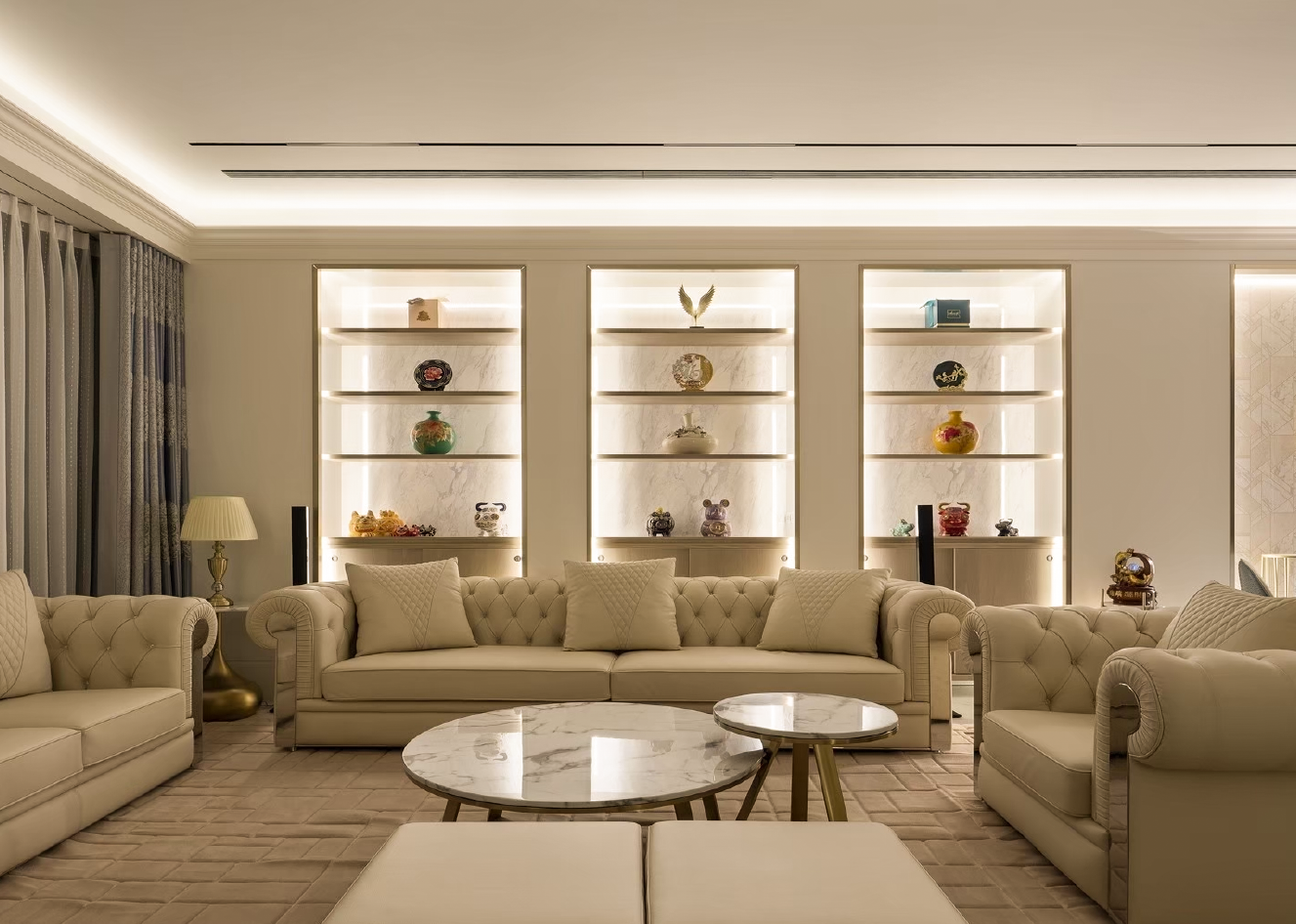
2700K-3000K
常用於居家的色溫,給予環境慵懶與舒適
如:居家、服飾店、咖啡廳…..等等
Commonly used in home environments to create a cozy and comfortable ambiance. Such as: residences, clothing stores, cafes… etc.
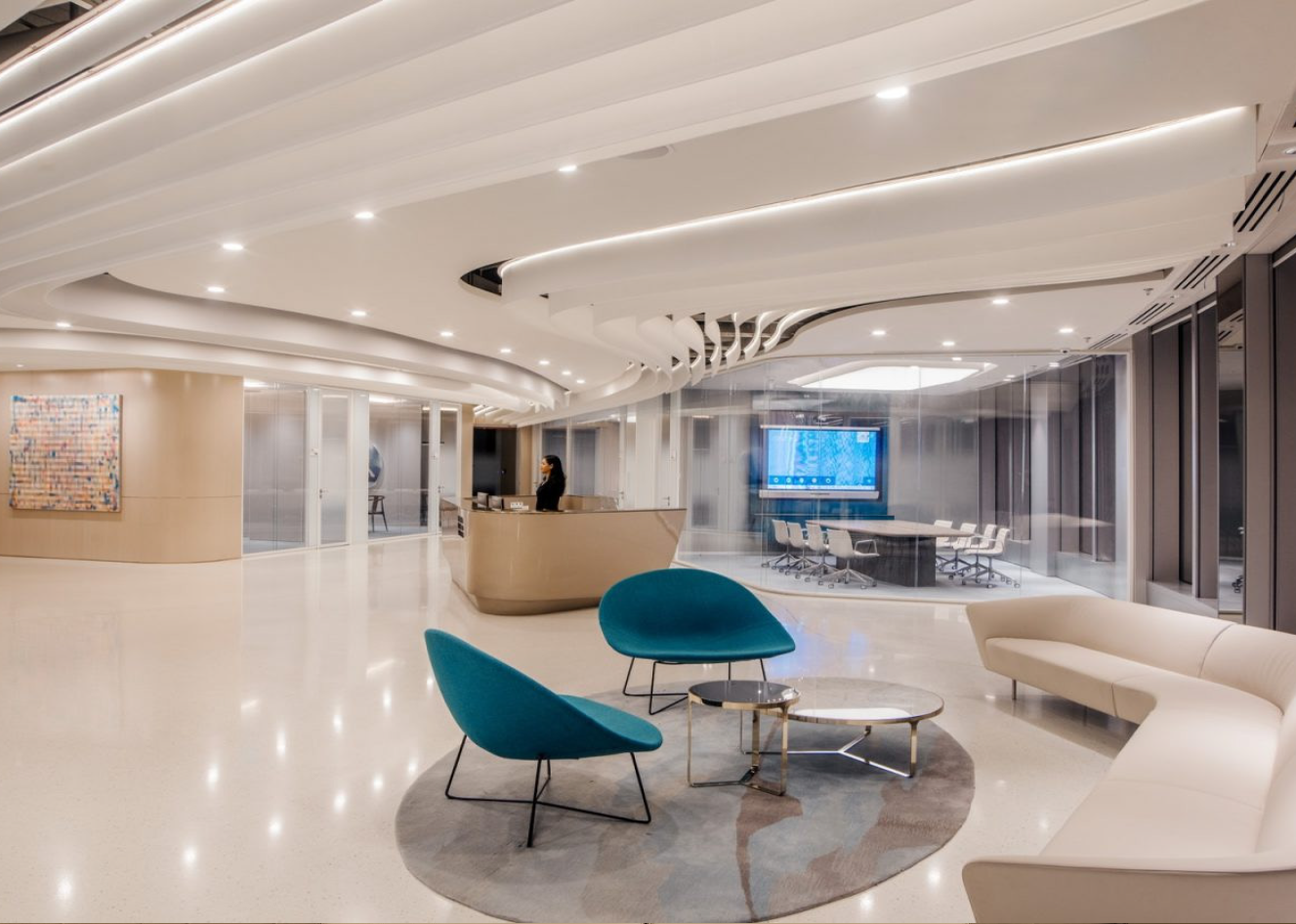
3000K-3500K
常用於有展示需求與閱讀的環境
如:居家書房、書局、展廳…..等等
Commonly used in environments requiring display and reading. Such as: home study rooms, bookstores, exhibition halls… etc.

3500K-4000K
常用於辦公室等需要強度注意力
如:辦公室,會議室…..等等
Commonly used in environments requiring focused
attention and intensity. Such as: offices, conference rooms… etc.
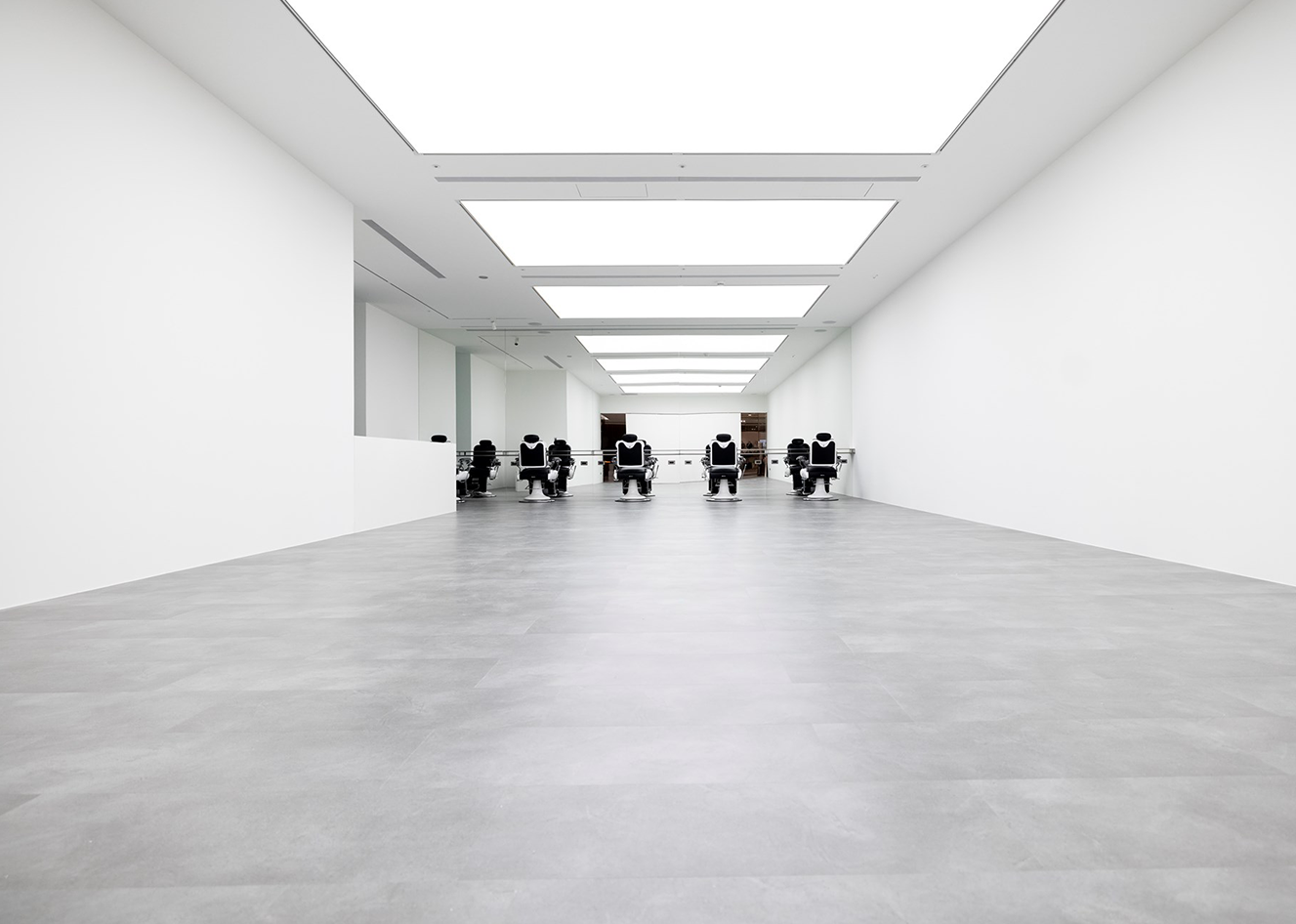
5000K-6000K
常用於有高強度注意力且精密度的環境
如:醫院、工廠、機電房…..等等
Commonly used in environments requiring high intensity focus and precision. Such as: hospitals, factories, mechanical rooms… etc.
希望這篇文章能幫助到各位的讀者。
I hope this article can help all readers.
IES燈光文件 IES Files
What’s IES files? 什麼是IES files? Wh…

